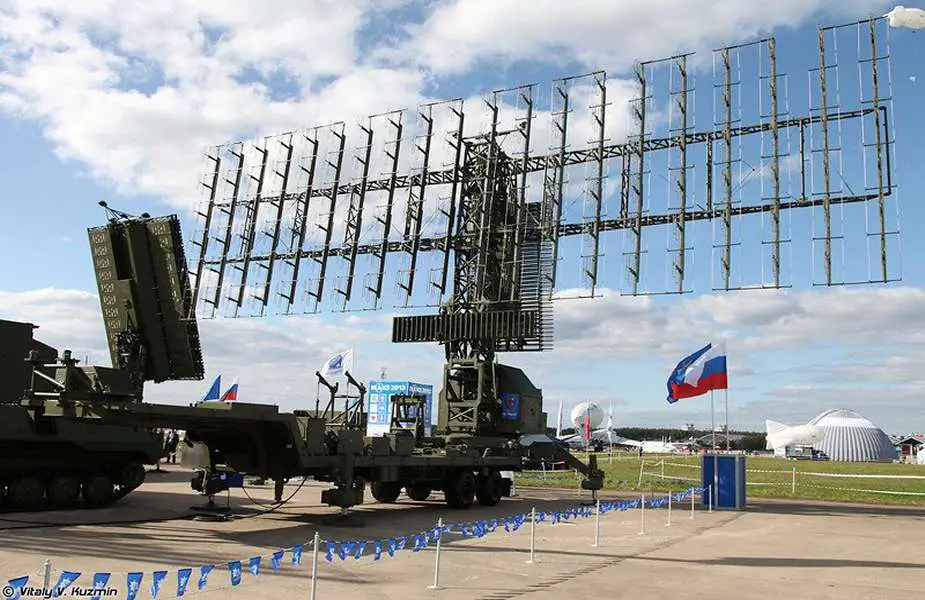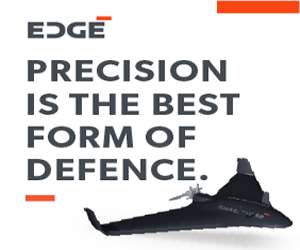On April 16, 2024, the Kyiv Post reported that a Russian long-range radar station, monitoring up to 700 km into Ukrainian territory, was targeted in an attack by seven kamikaze drones. The incident resulted in the Nebo-U radar station, valued at $100 million, being put out of service.
Follow Army Recognition on Google News at this link

Russian high-tech Nebo-U long-range radar station (Picture source: Vitaly Kuzmin)
The destroyed radar was capable of detecting various categories of aerial targets, including aircraft, cruise missiles, and projectiles using stealth technologies. The failure of this system significantly limits Russia's ability to monitor aerial activities along its northern border with Ukraine.
A military source stated that this radar detection incapacity "will assist our troops in conducting reconnaissance, deploying drones, and better utilizing military aviation in the region." This attack marks the second time a Nebo-U complex has been neutralized by the 13th Main Directorate of Military Counterintelligence of the SBU, with the first instance occurring in the Belgorod region, Russia.
The destruction of Russian long-range radar systems can presumably be explained by the hope of deploying the F-16 fighter jets promised by Western countries this summer.
As a reminder, the Nebo-U system, operational since 1995, is a modernized version of the Soviet-era Nebo radar, designed to track aerial targets up to a distance of 600 km. This equipment is crucial for the detection of advanced aerial threats, including hypersonic and ballistic missiles.
This incident is part of a series of material losses for Russia, including the recent destruction of the Zhitel electronic warfare station and the Zoopark-1 radar, estimated to cost between $10 and $15 million. These destructions underscore the intensification of Ukrainian efforts to weaken Russian defense capabilities in the context of prolonged conflict.
The Nebo-U radar can detect stealthy supersonic missiles and planes, district spokesman Igor Muginov said on Monday, May 23, 2016. The Nebo-U/Nebo-UE is part of the Nebo family of Very High Frequency (VHF) 2D and 3D mobile surveillance radars, which also includes the 55G6-1 Nebo 3D radar and the 1L13-3 Nebo-SV 2D radar, both deployed in the 1990s.
The radar is designed to detect, locate, and track various types of aerial targets, from planes to cruise and guided missiles, including small-size supersonic, ballistic, and low-observable targets, at a distance of 600 kilometers (373 miles).
The radar can determine the state affiliation of aerial targets and locate hostile jamming stations. It can operate automatically, independently, and within the unit control system.
As the spokesman noted, the Western Military District’s aerospace defense system has been entirely re-equipped and is fully monitoring the airspace in its area of responsibility.
The Nebo-U radar has been equipped with advanced digital techniques to suppress natural clutter and active jammers.
A single Nebo-U radar consists of an electronic equipment suite (the AP cabin), an antenna mast assembly mounted on three semi-trailers, a remote display device (the UV cabin); the 19U6 self-contained power supply system, a set of cable links connecting with the UV cabin and automated control system; and an SPTA set. The Nebo-U can operate in various climates with temperatures ranging from +50 Celsius to -50 Celsius, air humidity of 98%, and wind speed of 30 m/s at 1,000 meters of altitude above sea level.
The radar system can detect a fighter aircraft with a radar cross-section (RCS) of 2.5 square meters at 65 kilometers flying at 500 meters of altitude, at 310 kilometers flying at 10,000 meters, or at 400 kilometers flying at 20,000 meters. A hypersonic cruise missile with an RCS of 0.9 square meters can be detected at 250 kilometers flying at 10,000 meters of altitude or at 300 kilometers flying at 20,000 meters.
















